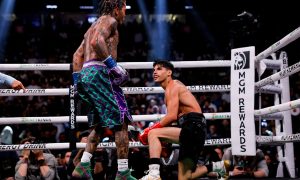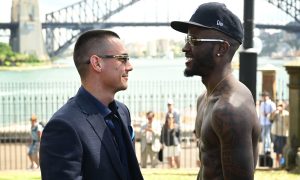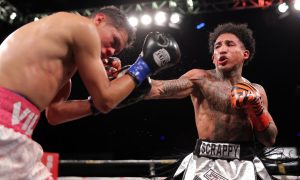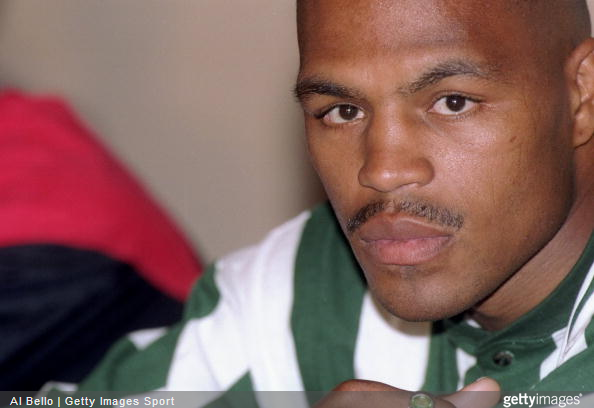 Photo by Al Bello/Getty Images
Photo by Al Bello/Getty Images
In the blink of an eye, a boxer’s career can be cut short. All it takes is a solitary blow to the head to extinguish a fighter’s promise. Even with the monumental riches on offer in the fight game, the severity of the sport proves that the risk massively out weighs the reward.
Throughout the history of boxing, there have been many cases in which fighters have been forced to retire after suffering devastating brain injuries, leading them to disappear into insignificance as they struggle to make ends meet in a world without the sport they once lived for.
This coming February, it will be two decades since Gerald McClellan and Nigel Benn provided us with one of the most chilling nights in boxing history, when the realization of the serious dangers involved in the sport became apparent.
McClellan entered the ring on the night carrying a fierce reputation as a puncher who looked destined for the top.
In the 10th round of an exciting back-and-forth tussle which saw Benn knocked through the ropes in the first round, ‘The G man’ strangely began to blink excessively while oddly pushing his gum shield out of his mouth.
After numerous blows to the head, McClellan took a knee for the second time in the round, forcing the referee to stop the fight. After the epic battle, McClellan calmly walked to his corner and sat on his stool.
Shortly after he collapsed and lost consciousness. Sadly, that was the last we saw of Gerald McClellan in a boxing ring.
The former WBO and WBC Middleweight champion now has extensive brain damage, which has led to him becoming 80 percent deaf as well as not being able to walk without support.
Inevitably, McClellan recently had some financial problems and had to sell his beloved world title to pay for his care, which is essential.
This is the stark reality of life after boxing and an insight into the carnage a brain injury can do to one of boxing’s brightest stars.
Recently, the amateur games has found itself scrutinized under the microscope due to the controversial removal of the protective head guards worn by the fighters.
The AIBA were aiming to make the game more attractive, hoping that they could bridge the gap somewhat between the paid and unpaid ranks.
However, after numerous high profile cuts at the Commonwealth Games in July, the decision to remove the head gear has become disputed.
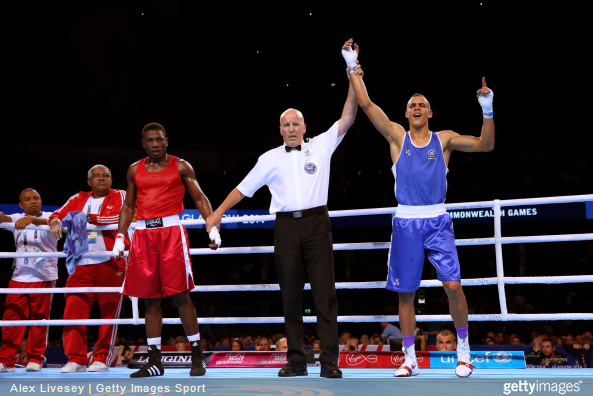 Photo by Alex Livesey/Getty Images
Photo by Alex Livesey/Getty Images
Another issue raised was the fact that there has been no additional training given to the young fighters to teach them how to fight without the protection.
Therefore, future stars could run the risk of incurring these common head injuries that have the potential to halt a very promising career instantly, before it even starts.
So can more be done to take care of the combatants who risk a life-threatening injury in a bid to entertain us?
Well, it is obvious that we cannot eradicate these brain injuries from boxing; but still, a lot of charities such as Ring 10 do a fantastic job in offering to provide help for boxers who fall on hard times, raising awareness in the process.
It is still debated whether the governing bodies do enough, but they do set up regular brain assessments for fighters, determined to diagnose these injuries before they manifest.
With this dark cloud constantly hanging over the sport, every time a fighter laces up their gloves, they are quite literally risking it all for the enthusiastic fans.
For that we thank them, because we would not have the sweet science without the men who put it all on the line in a bid to make boxing great.

















